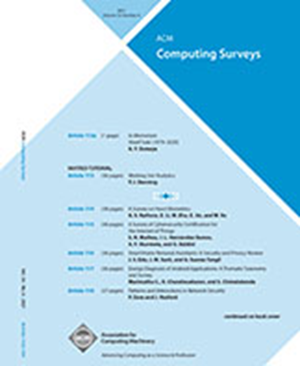序列比对算法和最先进的比对器综述
IF 28
1区 计算机科学
Q1 COMPUTER SCIENCE, THEORY & METHODS
引用次数: 0
摘要
大量的基因组学、蛋白质组学、转录组学和其他形式的数据,通常被称为组学数据,由于高通量下一代测序技术,每天都以前所未有的方式产生。在生物信息学中,从这些数据中产生价值和见解的主要过程之一是“序列比对”,这是一种将“参考”序列与更大序列相匹配的算法程序。尽管有大量的方法,成对和多序列比对仍然是一个复杂的问题,需要很高的计算能力。本文对近三十年来最突出的序列比对方法进行了回顾和分类,从整体算法综合、比对质量和性能基准测试等方面进行了统一的研究。最新的趋势表明,基于生物学的方向越来越专业化,对替代启发式方法的需求,以及光学方法和量子计算范式转变的承诺。本文章由计算机程序翻译,如有差异,请以英文原文为准。
A Survey on Sequence Alignment Algorithms and State-of-the-Art Aligners
Vast amounts of genomic, proteomic, transcriptomics and other forms, commonly referred to as -omics data, are generated daily in an unprecedented way thanks to high-throughput Next Generation Sequencing technologies. One of the main processes to generate value and insights from this data in bioinformatics is “sequence alignment”, an algorithmic routine that matches a “reference” sequence to a larger sequence. Despite the plethora of approaches, pairwise and multiple sequence alignment remain a complex problem that requires high computational power. In this paper, the most prominent sequence alignment approaches of the past three decades are reviewed and categorized, examining different aspects, such as their overall algorithmic synthesis, alignment quality and performance benchmarking tests in a uniform way. The latest trends reveal an increased specialization on biology-based directions, the need for alternative heuristic approaches and a promise in optics-enabled approaches and the quantum computing paradigm shift.
求助全文
通过发布文献求助,成功后即可免费获取论文全文。
去求助
来源期刊

ACM Computing Surveys
工程技术-计算机:理论方法
CiteScore
33.20
自引率
0.60%
发文量
372
审稿时长
12 months
期刊介绍:
ACM Computing Surveys is an academic journal that focuses on publishing surveys and tutorials on various areas of computing research and practice. The journal aims to provide comprehensive and easily understandable articles that guide readers through the literature and help them understand topics outside their specialties. In terms of impact, CSUR has a high reputation with a 2022 Impact Factor of 16.6. It is ranked 3rd out of 111 journals in the field of Computer Science Theory & Methods.
ACM Computing Surveys is indexed and abstracted in various services, including AI2 Semantic Scholar, Baidu, Clarivate/ISI: JCR, CNKI, DeepDyve, DTU, EBSCO: EDS/HOST, and IET Inspec, among others.
 求助内容:
求助内容: 应助结果提醒方式:
应助结果提醒方式:


